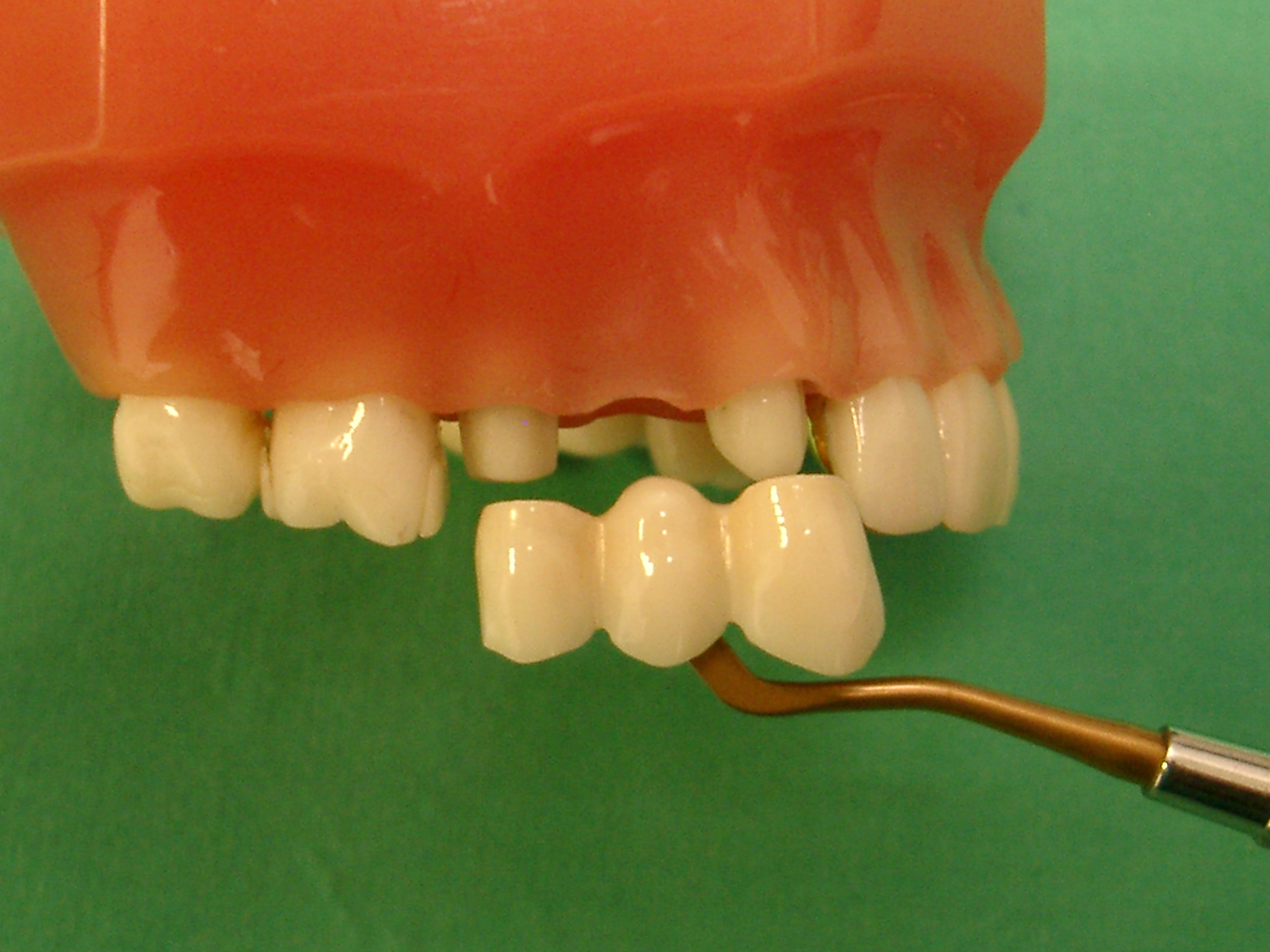What is - Bridges
A bridge is a fixed prosthesis that replaces missing teeth by using neighbouring teeth as support.
Healthy neighbouring teeth are trimmed and the bridge unit is fixed on them. A small number of missing teeth can also be replaced if the neighbouring teeth are sufficiently strong.
A bridge can be made of ceramic or a combination of metal alloys and ceramics to maximise strength and simulate a natural appearance. Newer materials such as zirconia may also be used for bridges. Your prosthodontist will evaluate and recommend a suitable solution for you.
Treatment for Bridges
Types of bridges
Conventional bridge
This consists of two crowns joined to an artificial tooth that is meant to replace the missing tooth. The healthy neighbouring teeth are trimmed and the bridge unit is fixed onto them.


Resin-bonded bridge
This requires minimal trimming of neighbouring teeth on their inner surfaces. Cement is used to bond the bridge structure to the back of these teeth. Although this method conserves more of the neighbouring teeth’s structure, not all patients are suited for it.


Procedure
Your dentist will need to assess the number of missing teeth, the condition of the neighbouring teeth and the supporting gums and bone prior to advising you on making a bridge. Your dentist will also be able to advice on alternative ways of replacing missing teeth after an examination.
The procedure itself requires at least two visits on an outpatient basis to complete.
The first treatment usually involves trimming the teeth under local anaesthetic, taking a dental mould to fabricate your prosthesis and placement of a temporary bridge. At the second appointment, your dentist will remove the temporary bridge, check for the fit, bite and look of the final bridge before cementing it in place.
Maintenance care for bridges is slightly different from that of crowns. It requires the use of a floss threader or superfloss for cleaning under the bridge. This will be demonstrated to you at chairside. Aside from flossing, brushing and regular check-ups are also important.
The information provided is not intended as medical advice. Terms of use. Information provided by SingHealth.
Get to know our doctors at SingHealth Hospitals in Singapore.
Get to know our doctors at SingHealth Hospitals in Singapore. here.




















